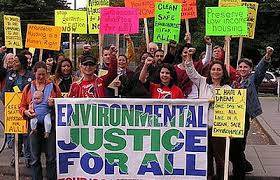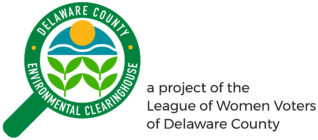EPA Ordered Not to Enforce Past or Current Environmental Justice Directives

A four-page memorandum issued by Acting EPA Assistant Administrator Jeffrey A. Hall has largely reversed or reinterpreted prior enforcement policies to downplay environmental justice, climate change and regulation of energy facilities.
The memo provides new guidance to EPA’s regional offices in how to apply existing National Enforcement and Compliance Initiatives (NECIs) in accordance with two executive orders issued by President Donald Trump and with EPA Administrator Lee Zeldin’s “Powering the Great American Comeback Initiative” directive.
Zeldin’s directive listed five major pillars of the Environmental Protection Agency’s “core mission.”
The pillars are (1) clean air, land and water for every American; (2) restore American energy dominance; (3) permitting reform, cooperative federalism and cross agency partnership; (4) making the United States the artificial intelligence capital of the world, and (5) bringing back American auto jobs.
No Environmental Justice
Essentially the memo specifies that the EPA will no longer incorporate environmental justice considerations in any of its enforcement actions. “Race and socioeconomic status are not permissible considerations or criteria for exercising enforcement discretion unless expressly required by statute or regulation,” according to the memo.
The Biden Administration had prioritized environmental justice in its energy policy and EPA actions and the Pennsylvania Department of Environmental Protection continues to embrace the concept of environmental justice and has designated the Marcus Hook-Chester industrial corridor as an environmental justice area.
The March 12 EPA memo states that concepts such as “vulnerable communities,” “overburdened communities” and “communities with environmental justice concerns” are already incorporated by reference within Zelden’s five pillars.
“All enforcement and compliance assurance actions and decisions must now be careful to avoid using or relying upon these considerations,” the memo says.
The memo notes that the EJscreen tool maintained by the Office of Environmental Justice – an interactive map to determine the location of environmental justice areas – has been disabled and may not be used for any enforcement or compliance activity.
The EPA may only consider vulnerable or overburdened communities where those concepts are limited to “(1) the physiological vulnerabilities of community members to a particular pollutant(s) at issue and (2) the attendant physiological effects and the level of the particular pollutant” are found in one area relative to others, the memo says.
Imminent Threat
The memo further orders that no actions can be taken to shut down any stage of energy production or power generation except where there is an” imminent and substantial threat” to human health or an express statutory or regulatory requirement to the contrary.
The EPA may only address violations at an energy facility that threaten human health and safety or risk releases or accidents that would disrupt energy production or power generation, according to the memo.
Existing NECIs Reinterpreted
The memo goes on to specify how the EPA may implement current NECIs.
Mitigating Climate Change: to conform with the president’s executive orders, the EPA will no longer focus on methane emissions from domestic oil and gas facilities. Any existing orders, settlements or other resolutions must have the approval of the assistant administrator for the Office of Enforcement and Compliance Assurance. It can only focus on the “unlawful import and sale” of hydrofluorocarbons and regulation of landfills, the memo says.
Coal Ash Contamination: As this NECI focuses on noncompliance with environmental justice standards, it is inconsistent with the president’s executive orders and the administrators initiative, the memo says.
“Henceforth enforcement and compliance assurance for coal ash at active power plant facilities shall focus on imminent threats to human health,” the memo says. “Under no circumstances may enforcement or compliance assurance incorporate environmental justice considerations.”
Air Pollution Reduction: While enforcement and compliance can continue to focus on areas with the highest levels of hazardous air pollutants affecting human health, they will no longer focus exclusively on “communities selected by the regions [regional offices] as being ‘already highly burdened with pollution impacts’ (and thereby ignore areas with high levels of a singular, toxic pollutant),” according to the memo.
“Instead enforcement and compliance assurance will target the worst pollution from hazardous air pollutants affecting human health wherever they may be found,” the memo says.
Chemical Accident Risk Reduction: According to the memo, this NECI focuses only on two particular hazardous substances, anhydrous ammonia and hydrogen fluoride, but nevertheless in practice hazardous substances other than those two have comprised the justification for the majority of inspections of petrochemical facilities. Future inspections should prioritize high risk facilities regardless of the regulated chemicals utilized at the facility.
The memo says it applies to all civil and criminal enforcement staff and all enforcement matters moving forward, including future actions taken on existing enforcement matters.
Jodine Mayberry for Clearinghouse
–

